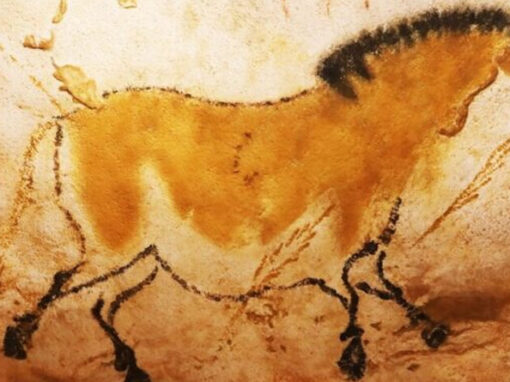
«A face from the past, a mystery waiting to be solved.»

No one knows the real name of the Red Lady or her role in the community that earned her the honor of a ceremonial burial nearly 19,000 years ago.
In the El Mirón Cave, in northern Spain, archaeologists discovered the burial of a woman completely covered in red ochre—a striking part of a Upper Paleolithic funeral ritual.
At that time, the Homo sapiens family of the Red Lady survived through hunting and gathering. They were already capable of crafting simple tools from bones and flint cores.
The Red Lady must have been someone of significance, as she was laid to rest with flowers and a carved stone marker, serving as a kind of headstone.
Did you know…?

In the Paleolithic era, there wasn’t just one human species as there is today. Alongside Homo sapiens, there were other human species such as Homo habilis, Homo rudolfensis, Homo ergaster, Homo erectus, Homo antecessor, Homo neanderthalensis, and others.
Many of these human species did not coexist—either because they lived in different time periods or were geographically distant. However, some groups, such as Homo sapiens and Neanderthals, did live side by side in Europe.
Paleolithic means «old stone», and it was during this era that humans began to use fire.
The oldest known site showing evidence of fire used for cooking is located in Evron, Israel, and dates back 800,000 years.
To make this discovery, researchers used an artificial intelligence system capable of detecting subtle traces of fire by analyzing molecular changes in bone remains.
Even though we don’t know the exact name of the Red Lady, we can still learn many things about her and her surroundings. We can understand the climate she lived in thanks to paleoclimatology, or discover the flora and fauna of her time through paleobotany and paleozoology. We can also learn about the technology they used, and even what they ate.
Learn with La Dama Roja

The Paleolithic Era
The Red Lady will introduce us to this fascinating time when humans were just beginning to learn the basics of technology.
The Environment
To survive, Paleolithic men and women had to be able to hunt, gather, and make fire—all of which required a deep knowledge of nature.
The Society
Language, communication, social organization, and the way they treated the living and the dead were crucial aspects of life for our Paleolithic ancestors.
Want to know more?
Would you like to speak face to face with the Red Lady?
Would you like this character to appear at your school or museum?
Do you want to learn more about how the Red Lady activity works in detail?















